Stocks & Indexes
November 11, 2006 2:30 p.m. AET (10:30 p.m. ET)
The Big Picture
Crude oil is consolidating between $57 and $62/barrel. Whether this will lead to a reversal of the recent down-trend is too early to tell. The dollar continues to weaken, headed for a test of $1.30 against the euro, the high of the last 6 months. Gold continues in a strong up-trend after a bullish, short, mid-week retracement.
Probability of recession in the next four quarters remains at 41 per cent according to the Wright model. A climb above 50% would be cause for concern.
USA: Dow, NASDAQ & SP500
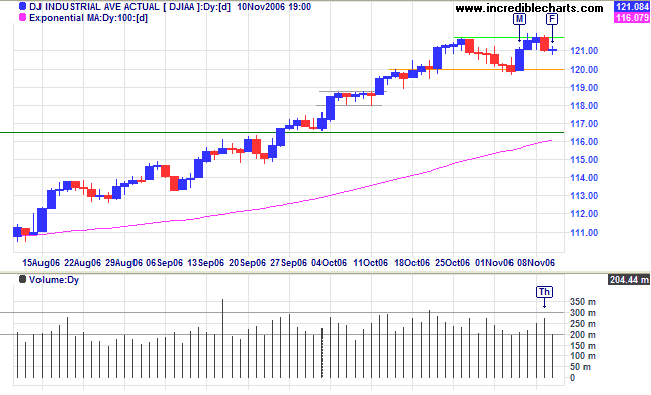
Long Term: The Dow is in a primary up-trend with support at 10700.
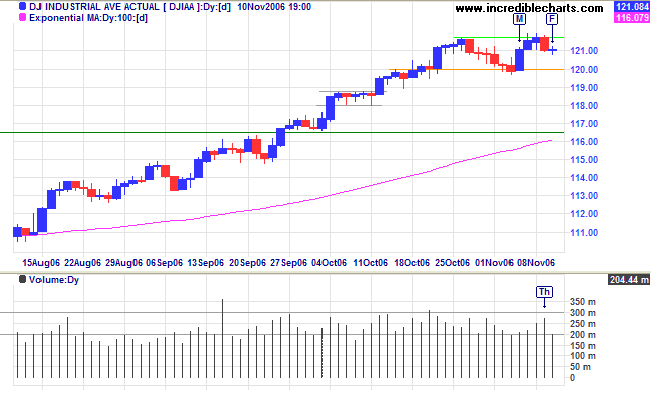
Note how closely the index shadows Fedex. Divergences between the two have often preceded a trend reversal in the past.
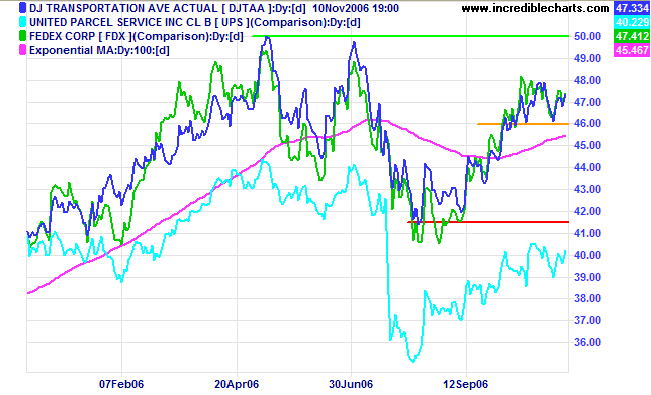
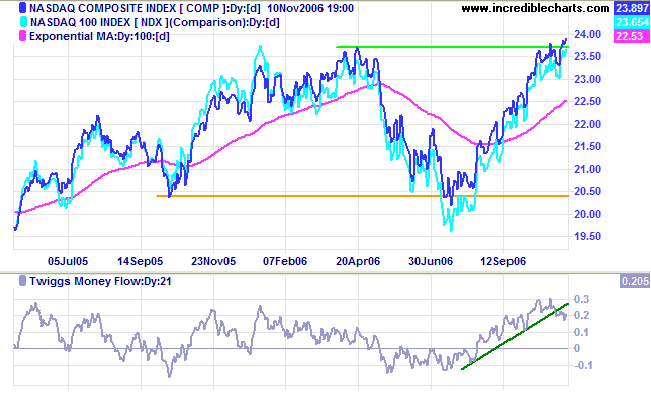
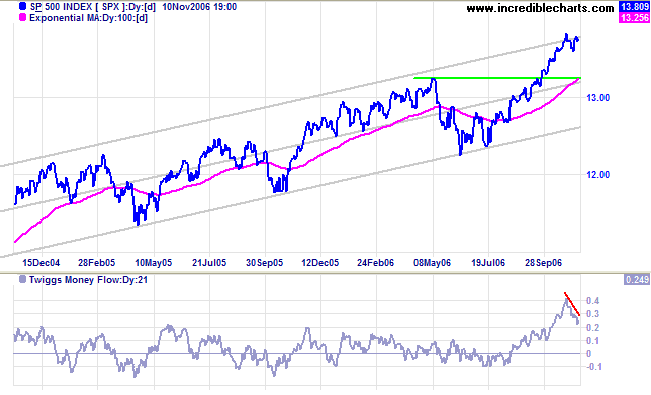
Long Term: The S&P 500 is in a primary up-trend with support at 1220.
LSE: United Kingdom
Medium Term: Twiggs Money Flow (21-day) exhibits a bearish triple divergence, warning of another test of support at 6100. Failure of this level would signal a secondary correction -- more serious because we are only marginally above the April high and a correction would be likely to test primary support at 5500. If, on the other hand, support at 6100 holds, the target of 6700 (calculated as 6100 + {6100 - 5500}) is still achievable.
Long Term: The primary up-trend continues.
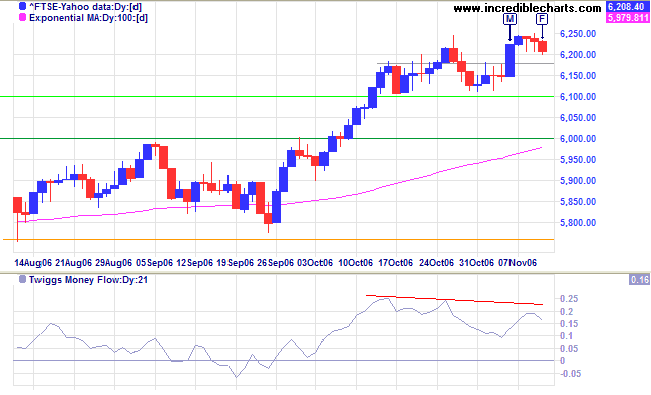
Nikkei: Japan
Medium Term: Twiggs Money Flow (21-day) is also trending lower, a bearish sign. A retracement that respects the moving average (from below) would signal a test of primary support at 14200 -- more bearish because of the failure to reach 17500 and make a new high.
Long Term: The index remains in a primary up-trend.
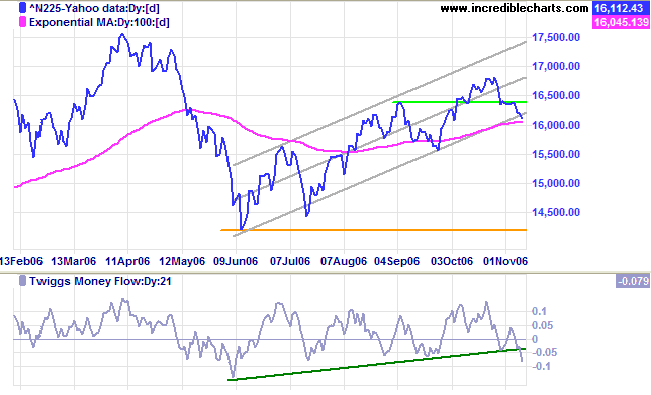
ASX: Australia
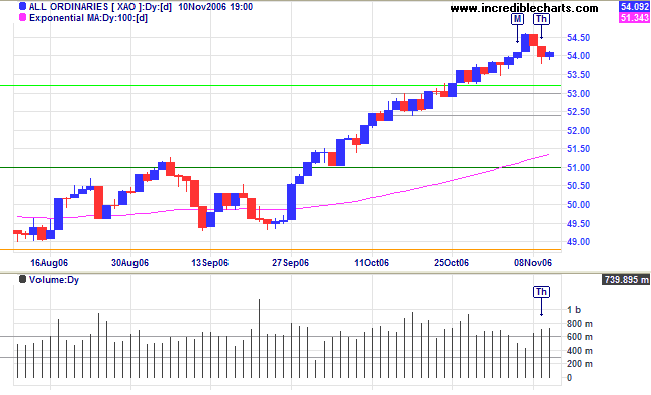
Long Term: The All Ordinaries remains in a primary up-trend with support at 4800.
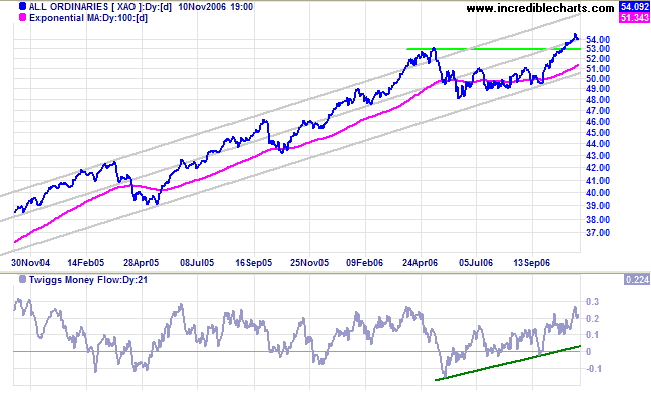
~ General Douglas MacArthur
|
Technical Analysis and Predictions I believe that Technical Analysis should not be used to make predictions because we never know the outcome of a particular pattern or series of events with 100 per cent certainty. The best that we can hope to achieve is a probability of around 80 per cent for any particular outcome: something unexpected will occur at least one in five times. My approach is to assign probabilities to each possible outcome. Assigning actual percentages would imply a degree of precision which, most of the time, is unachievable. Terms used are more general: "this is a strong signal"; "this is likely"; "expect this to follow"; "this is less likely to occur"; "this is unlikely"; and so on. Bear in mind that there are times, especially when the market is in equilibrium, when we may face several scenarios with fairly even probabilities. Analysis is also separated into three time frames: short, medium and long-term. While one time frame may be clear, another could be uncertain. Obviously, we have the greatest chance of success when all three time frames are clear. The market is a dynamic system. I often compare trading to a military operation, not because of its' oppositional nature, but because of the complexity, the continual uncertainty created by conflicting intelligence and the element of chance that can disrupt even the best made plans. Prepare thoroughly, but allow for the unexpected. The formula is simple: trade when probabilities are in your favor; apply proper risk (money) management; and you will succeed. For further background, please read About The Trading Diary. |

Author: Colin Twiggs is a former investment banker with almost 40 years of experience in financial markets. He co-founded Incredible Charts and writes the popular Trading Diary and Patient Investor newsletters.
Using a top-down approach, Colin identifies key macro trends in the global economy before evaluating selected opportunities using a combination of fundamental and technical analysis.
Focusing on interest rates and financial market liquidity as primary drivers of the economic cycle, he warned of the 2008/2009 and 2020 bear markets well ahead of actual events.
He founded PVT Capital (AFSL No. 546090) in May 2023, which offers investment strategy and advice to wholesale clients.
